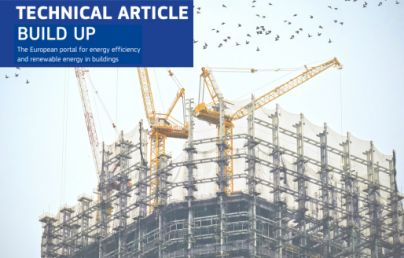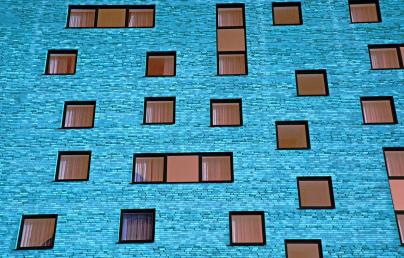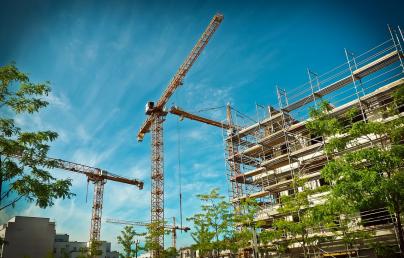OVERVIEW | Energy Efficiency in Historic Buildings: A State of the Art

OVERVIEW | Energy Efficiency in Historic Buildings: A State of the Art
Historic buildings can be considered the symbol of European cities, towns and villages; entire districts are a unique proof of the European cultural heritage. Currently, about 35% of the EU's buildings are over 50 years old and almost 75% of the building stock is energy inefficient. A preconception widespread in many countries is that historic buildings, particularly those with special protection, should be exempt from having to be equipped with new energy efficient technologies.
Although a certain degree of caution should be exercised when devising renovation plans for historic buildings, the simple argument that they cannot in any way be adapted to integrate renewable energy installations for fear of changing their nature and appearance, is not always a solid argument in the societal move towards sustainability.
Moreover, the renovation of existing buildings has the potential to lead to significant energy savings, possibly reducing the EU’s total energy consumption by 5-6% and lowering CO2 emissions by about 5%. Following the introduction of efficiency requirements in building codes, new buildings today consume only half as much as typical buildings from the 1980s.
Beyond the opportunity for energy and carbon savings, the built heritage needs continuous care and maintenance to sustain functionality and avoid decay. Improving the energy performance of historic buildings will also improve internal comfort conditions, reduce the energy demand and with that the risk of fuel poverty. Providing users with current standards of comfort is a crucial requirement to ensure the continued use of historic buildings over time, and with that their conservation and endurance.
The renovation rate of the existing built stock is still very low at 0.4-1.2% depending on the country, and there are limitations for the implementation of retrofit measures regarding the social, economic and technical viability. Retrofitting historic buildings requires detailed planning in order to guarantee that the case-specific variables are thoroughly considered. An approach that reduces the overall environmental impact of historic buildings has to improve thermal transmittance of the envelope without compromising the historic integrity of the façades, for instance by applying thermal insulation.
To support innovation in the cultural heritage sector, the European Framework for Action on Cultural Heritage aims to set a common approach for heritage-related activities at the European level, primarily in EU policies and programmes. This framework serves as an inspiration for regions and cities in Europe, as well as for cultural heritage organisations and networks when developing their actions on cultural heritage.
Within the strategic objectives for cultural heritage in a sustainable Europe, special attention is given to regenerating cities and regions through cultural heritage, promoting adaptive re-use of heritage buildings, and balancing cultural heritage with sustainable cultural tourism and natural heritage. The European Framework for Action on Cultural Heritage establishes a set of 4 principles to which the EU is contributing. These are:
- A holistic approach, looking at cultural heritage as a resource for the future and putting people at its heart,
- Mainstreaming an integrated approach across different EU policies,
- Evidence-based policymaking, including through cultural statistics,
- Multi-stakeholder co-operation, encouraging dialogue and exchange between a wide range of actors when designing and implementing cultural heritage policies and programmes.
EU FUNDED PROJECTS
The principles of this framework have already been the focus of several EU projects that are dealing with energy efficiency in heritage buildings. The completed project 3ENCULT, an EU Seventh Framework programme project, formulated the paradigm that to survive historic buildings have to be lived in and maintained. In fact, energy-efficient retrofit can also be useful for structural protection as well as for comfort reasons, comfort for users and ‘comfort’ for heritage collections. The main project objectives were to develop passive and active solutions for conservation and energy-efficient retrofit via long term monitoring (also for IEQ controlling), and to plan and evaluate tools and concepts supporting the implementation, quality assurance and control of success of the energy retrofit measures. One of their main exploitable results is a set of guidelines that holistically summarise the principles for the energy retrofitting of historic buildings, from the first diagnosis to the adequately designed intervention with respect to preservation of the historic structure, user comfort, and energy efficiency. The content was developed by an interdisciplinary team of researchers and the wide range of expertise, of design examples, of calculations, and of measuring results from eight case studies has made this manual an indispensable tool for all architects, engineers, and energy consultants.
Historic buildings have the potential to achieve higher levels of energy efficiency due to its passive characteristics. However, installing internal insulation can be a difficult task subject to the risk of failure and high costs. Building owners and practitioners in the construction industry need greater knowledge and guidelines on how to handle internal thermal insulation in historic buildings effectively and securely. The H2020 RIBuild project has set out to fill this gap and aims at developing know-how about correctly installing internal thermal insulation in historic buildings while maintaining the architectural and cultural heritage, and at the same time contributing to meeting the EU 2020 climate and energy targets. This is performed by investigating how and under what conditions internal thermal insulation can be employed without posing a risk to the façade due to thermal stress. Research activities include on-site case studies as well as simulations and laboratory measurements of materials. The RIBuild project will result in comprehensive guidelines on how to install internal thermal insulation in historic buildings, and such guidelines are aimed at practitioners, authorities, building owners, consulting engineers, contractors and other professional practitioners within the building sector in the EU.
The IEA-SHC Task 59 is a new collaborative research project of the International Energy Agency (IEA) with a focus on the preservation of the built heritage. Within the Solar Heating and Cooling programme (SHC), 25 organisations (including public and private research institutions, heritage authorities, public administration, and industry) from 13 countries have joined forces in IEA-SHC Task 59 - Deep renovation of historic buildings towards lowest possible energy demand and CO2 emission. The aim of Task 59 is to support historic building decision-makers (i.e. owners, managers, practitioners and public sector) by sharing the existing research work, knowledge and new findings from all involved partners in a highly interdisciplinary collaboration. The topics covered in Task 59 range from exemplary building renovations and conservation compatible retrofit solutions to the multidisciplinary design process. One of the main outputs of Task 59 will be the development of a Historic Building Atlas as an online database for best practice examples of energy refurbishments of historic buildings developed in close collaboration with the European Interreg Alpine Space project ATLAS, co-funded by the European Union.
The ATLAS Project (Advanced Tools for Low-carbon, high-value development of historic architecture in the Alpine Space) aims at (re-)discovering and raising the value of traditional alpine architecture (buildings and ensembles beyond the level of protection). These buildings are often located in deprived areas. The project will pave the way for the sustainable development of historic structures while respecting their cultural significance. This will include capitalizing and optimizing existing best practice solutions for building refurbishment. Moreover, ATLAS will carry out methodologies to support alpine municipalities in sustainable development strategies. A tailored knowledge transfer will allow for sharing of practical experience of best practice examples, from construction detail to regional planning.
STANDARDS
The European Committee for Standardisation has a dedicated CEN Technical Committee (CEN/TC 346 -Conservation of Cultural Heritage) whose scope includes the characterisation of materials, the processes, practice, methodologies and documentation of conservation of tangible cultural heritage to support its preservation, protection and maintenance and to enhance its significance. This includes the characterisation of deterioration processes and environmental conditions for cultural heritage and the products and technologies used for the planning and implementation of their conservation, restoration, repair and maintenance. One of their working packages was the production of EN 16883:2017 Conservation of cultural heritage - Guidelines for improving the energy performance of historic buildings. The guidelines are meant to be used by building owners, practitioners and public sector to select appropriate measures in the planning stage. The guidelines are applicable to a wide range of buildings where special considerations are needed in order to find a sustainable balance between the use of the building, its energy performance and its conservation and are not limited to listed buildings with formal protection. Rather than specifying general solutions beforehand, this standard provides a procedure to facilitate the best decision for each individual building.
The American Society of Heating, Refrigerating, and Air-Conditioning Engineers (ASHRAE) engages with the topic via ASHRAE Guideline 34P, Energy Guideline for Historical Buildings. This provides advice for energy efficiency and energy conservation improvements involving historic structures. These improvements would seek to minimise disturbance to the historic character, characteristics and materials (significance, value and qualities). The guideline addresses planning and operation, mechanical systems, building envelopes and lighting.
It is notable that some worldwide certification agencies and standards are engaging with energy efficiency in historic buildings. The Green Building Council together with UNESCO are engaging with issues around energy efficiency and historical buildings. Last May, Venice hosted an international workshop to discuss geothermal heating and cooling systems and their potential in reducing CO2 emissions in historic buildings. Also, on this occasion the very first protocol for GBC Historic Buildings was drafted as the world's first energy-environmental assessment system that can bridge the gap between energy efficiency, environmental sustainability and conservation of the historical and testimonial heritage. During the workshop the discussion focused on the need to promote the adoption of an interdisciplinary approach to strengthen the technological innovation and sustainability practices applied to historic buildings, particularly those included in UNESCO sites and cultural heritage in general.
Another building standard tackling historic buildings is the rating system LEED (Leadership in Energy and Environmental Design), with the aim of examining and classifying buildings according to energy and environmental requirements. The particular publication LEED O+M (Building Operations and Maintenance) has been developed for existing buildings undergoing improvement work with little to no construction and is based on the operative and management aspects.
These topical projects evidence the fact that Europe is at an important moment to identify and promote good approaches and solutions to retrofit historic buildings. However, retrofitting historic buildings is still a technical challenge and it requires some risk-related considerations. Interdisciplinary research projects (EFFESUS, Spara och Bevara), conferences (EEHB) and the establishment of international committees (ICOMOS ISCES+CC and ECTP Focus Area Cultural Heritage) demonstrate a common interest in the topic from a technological side as well as from conservators.


